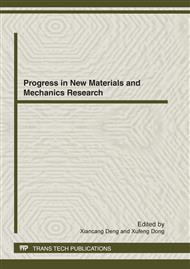p.320
p.325
p.330
p.335
p.342
p.351
p.355
p.360
p.369
Effect of Surface Roughness on Nanocontact: Quasicontinuum Simulation
Abstract:
By using the two-dimensional quasicontinuum method, the nanocontact between Ni indenter and single crystal Cu substrate with a smooth or rough surface is simulated. The contact force varies in a nonlinear fashion with the increasing indenter displacement, including several force drops. The atomic-scale deformation mechanism in the Cu substrate during nanocontact process is monitored. Shockley partials, Lomer-Cottrel locks as well as twinning faults are observed at the force drops. The Lomer-Cottrel locks play an important role in smooth surface nanocontact process, and they insure that Cu substrate undergoes elastic deformation dominantly during nanocontact process. The contact forces calculated from the Maugis-Dugale (M-D) theory show a good agreement with those obtained by the QC simulation in the smooth surface nanocontact process. It must be noted that the M-D theory is no longer suitable to describe the rough surface nanocontact problem due to the severe plastic deformation in the asperities of the substrate when the characteristic size of roughness is on the order of the indenter depth.
Info:
Periodical:
Pages:
342-347
Citation:
Online since:
April 2012
Authors:
Price:
Сopyright:
© 2012 Trans Tech Publications Ltd. All Rights Reserved
Share:
Citation:


